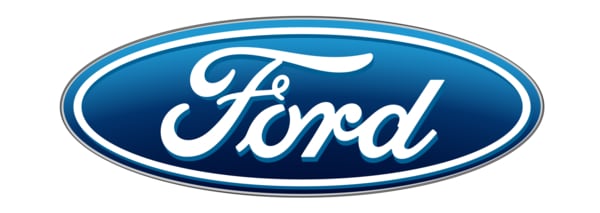
At any given point when you're driving down the street, if you can look around, it won't take you long to spot a Ford. In fact, according to USA Today, Ford stands out as the most popular automaker in the United States.
But, what makes Ford popular?
How did one of the most iconic car companies in America get its start and transform into the brand we know and love today?
Keep reading for a closer look at the history of the famed Ford Motor Company and what they've done over the decades to remain America's top car company.
What Makes Ford Popular?
Early History of the Company
The Ford Motor Company was officially founded in 1903, but Henry Ford's interest in vehicles dates back to the late 1800s.
Twelve years before he released his world-famous Model T, he built his first vehicle, the Quadricycle, which had four bicycle wheels and was powered by a four-horsepower engine.
Ford's eye for innovation extended beyond car design, however, and into the daily aspects of running a business.
Ford realized the need for a more efficient assembly of the Model T and created the first assembly line. This reduced assembly time for the Model T's chassis from 12.5 hours down to 1.5 and gave him the ability to lower the price of the vehicle.
As a result, cars started to transition from a luxury novelty item to an affordable mode of transportation for the masses.
Ford also heavily influenced working conditions across the country – some that we still benefit from today – by reducing the workday at his factory from nine hours down to eight. He also increased wages, leading to a higher employee retention rate. These changes directly helped to form the American middle class in the 1900s.
Ford's influence in American culture was further felt during World War II when the company started producing military Jeeps. In fact, in 1942 Ford stopped production on civilian automobiles to focus solely on manufacturing military equipment including vehicles, planes, aircraft engines, and more.
And, it was at a Ford plant when a rivet gun operator named Rose Will Monroe was chosen to become "Rosie the Riveter" in promotional pieces for war bonds.
Since its initial inception, Ford Motor Company cemented itself as a proudly American company, whose effects can be felt throughout United States history.
Continued Innovations
Even after Henry Ford's death, his spirit of pushing the envelope to create new ideas lived on under the leadership of his grandson, Henry II.
First came the Thunderbird in the mid-1950s, which put an emphasis on the idea of comfort and convenience in a vehicle.
Then, in 1964, Ford released what would quickly become one of the most iconic sportscars of all time, the Mustang.
The company continued to be woven into American culture and significant historical events in the late 1960s when the company played a role in NASA's moon landing. At the time, Ford owned the electronic company, Philco, which helped design and build NASA's Mission Control and helped support their Apollo and Gemini space programs.
Eventually, Philco evolved into Ford Aerospace and Communications Corporation, which built satellites for television transmissions and telephone calls. Those satellites are still used to this day.
The company continued to break barriers in the mid-1980s, with the release of the Taurus. It was the first car model to move away from the boxy shape of the time into a more curved, aerodynamic shape.
Not only did it become one of Ford's most popular vehicles, but it influenced other manufacturers to shift to the new rounded design as well.
And, well before its time, Ford released its first electric vehicle in 1996. The Ford Ranger EV would pave the way for the hybrid and electric vehicles we see on the market today.
Ford has always recognized the need to learn about how to increase vehicle safety for drivers. They have performed crash tests around the world, gathering as much data as possible through both physical and virtual testing.
And, as technology continues to advance, Ford's safety measures follow suit. In 2007, Ford began offering a hands-free and voice-activated system complete with cell phone integration and navigation, in the form of their SYNC partnership with Microsoft. In the years since SYNC was introduced, Ford has continued to update it so that its customers have safe access to technology while driving.
Henry Ford's creative philosophies for his company continue to live on and propel Ford Motor Company into the next wave of vehicle innovations.
Looking at What's to Come
Ford shows no sign of slowing down, with exciting new vehicles on the horizon for 2021 and beyond. Staying true to their original roots, Ford plans to build on the vehicles their customers have loved for years, with improvements for the current age.
The upcoming Mustang Mach-E combines the beloved Mustang's power with the eco-friendly benefits of an electric vehicle. Ford promises all the exhilaration of a traditional mustang, with the added benefit of zero emissions.
Also coming soon to the Ford lineup is the new generation Bronco, which had been previously discontinued in 1996. This new version is made for the rugged adventurers who loved the original but is upgraded with new smart technology for the 21st century.
If one thing can be learned from Ford's past, is that the company will continue to be at the forefront of the future of driving and working to continually innovate for the customers that made them a household name.
Servicing All Your Ford Needs
When you visit Steve Marsh Ford, it will be easy to see what makes Ford popular and why it's the vehicle of choice for so many drivers around the country.
Whether you're a longtime Ford owner looking to add a new vehicle to your collection or you are interested in trying out a Ford for the first time, we're sure to have something to suit your needs in our extensive inventory.